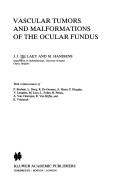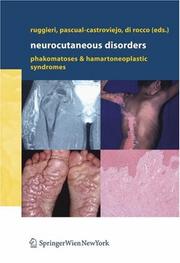| Listing 1 - 10 of 15 | << page >> |
Sort by
|
Article
Publisher: s.l. s.n.
Abstract | Keywords | Export | Availability | Bookmark
 Loading...
Loading...Choose an application
- Reference Manager
- EndNote
- RefWorks (Direct export to RefWorks)
Article
Abstract | Keywords | Export | Availability | Bookmark
 Loading...
Loading...Choose an application
- Reference Manager
- EndNote
- RefWorks (Direct export to RefWorks)
ANA Anatomy & Morphology --- anatomy --- morphology --- petiole --- stems --- vascular tissue
Book
Year: 1904 Publisher: Aschaffenburg C. Krebs'sche Buchhandlung
Abstract | Keywords | Export | Availability | Bookmark
 Loading...
Loading...Choose an application
- Reference Manager
- EndNote
- RefWorks (Direct export to RefWorks)
ANA Anatomy & Morphology --- anatomy --- bark --- morphology --- stem anatomy --- vascular tissue
Book
Publisher: Rouen
Abstract | Keywords | Export | Availability | Bookmark
 Loading...
Loading...Choose an application
- Reference Manager
- EndNote
- RefWorks (Direct export to RefWorks)
DEN Dendrology & Forestry --- dendrology --- resin --- trees --- vascular tissue
Book
Year: 1903 Publisher: Leipzig Gebrüder Borntraeger
Abstract | Keywords | Export | Availability | Bookmark
 Loading...
Loading...Choose an application
- Reference Manager
- EndNote
- RefWorks (Direct export to RefWorks)
ANA Anatomy & Morphology --- anatomy --- leaf --- meristem --- morphology --- sieve elements --- spines --- thorns --- tree architecture --- vascular tissue

ISBN: 079230750X 9780792307501 Year: 1990 Publisher: Dordrecht Kluwer Academic Publishers
Abstract | Keywords | Export | Availability | Bookmark
 Loading...
Loading...Choose an application
- Reference Manager
- EndNote
- RefWorks (Direct export to RefWorks)
Fundus oculi --- Fundus oculi --- Eye Neoplasms --- Fundus Oculi --- Neoplasms, Vascular Tissue --- Retinal Diseases --- Retinal Vessels --- Blood-vessels --- Tumors --- Abnormalities --- Humans --- Eyes --- Tumours
Book
Year: 2020 Publisher: Basel, Switzerland : MDPI - Multidisciplinary Digital Publishing Institute,
Abstract | Keywords | Export | Availability | Bookmark
 Loading...
Loading...Choose an application
- Reference Manager
- EndNote
- RefWorks (Direct export to RefWorks)
Regenerative medicine and tissue engineering play significant roles in the treatment of currently intractable conditions, such as chronic heart failure, stroke, chronic osteoarthritis, and other maladies. Regenerative medicine and tissue engineering generally depend on the utilization of stem cells to treat patients but may also utilize mature cells that would not normally be considered as stem cells (e.g., skin). Stem cells (like mature cells) may be obtained from many sources in the body including bone marrow, cord blood, cord tissue, adipose tissue, etc. Although stem cells are often used in therapy immediately upon isolation, in many circumstances, the stem and progenitor cells will be harvested, processed and banked frozen until a later time. Biobanking is a convenient alternative to same-day therapeutic use, in that it allows for patient recovery (e.g., from liposuction), provides time to identify the best treatment options, and may allow for multiple interventions with additional patient inconvenience or risk.
Medicine. --- MSCs --- EVs --- exosomes --- tissue regeneration --- immunomodulation --- biobanking --- adult stem cells --- ground-state --- autologous transplantation --- regenerative medicine --- stem cell banking --- newborn stem cells --- perinatal stem cells --- umbilical cord tissue --- umbilical cord blood --- placenta --- Vascular tissue engineering --- human cord blood-derived endothelial cells --- endothelialization --- vascular graft --- Munich Vascular Biobank --- atherosclerosis --- human vascular tissue --- RIN --- RNA fragmentation --- adipose tissue --- cryopreservation --- autologous --- fat grafting --- cryogenic storage --- lipoaspirate --- cosmetic surgery --- MSCs --- EVs --- exosomes --- tissue regeneration --- immunomodulation --- biobanking --- adult stem cells --- ground-state --- autologous transplantation --- regenerative medicine --- stem cell banking --- newborn stem cells --- perinatal stem cells --- umbilical cord tissue --- umbilical cord blood --- placenta --- Vascular tissue engineering --- human cord blood-derived endothelial cells --- endothelialization --- vascular graft --- Munich Vascular Biobank --- atherosclerosis --- human vascular tissue --- RIN --- RNA fragmentation --- adipose tissue --- cryopreservation --- autologous --- fat grafting --- cryogenic storage --- lipoaspirate --- cosmetic surgery
Book
Year: 2020 Publisher: Basel, Switzerland : MDPI - Multidisciplinary Digital Publishing Institute,
Abstract | Keywords | Export | Availability | Bookmark
 Loading...
Loading...Choose an application
- Reference Manager
- EndNote
- RefWorks (Direct export to RefWorks)
Regenerative medicine and tissue engineering play significant roles in the treatment of currently intractable conditions, such as chronic heart failure, stroke, chronic osteoarthritis, and other maladies. Regenerative medicine and tissue engineering generally depend on the utilization of stem cells to treat patients but may also utilize mature cells that would not normally be considered as stem cells (e.g., skin). Stem cells (like mature cells) may be obtained from many sources in the body including bone marrow, cord blood, cord tissue, adipose tissue, etc. Although stem cells are often used in therapy immediately upon isolation, in many circumstances, the stem and progenitor cells will be harvested, processed and banked frozen until a later time. Biobanking is a convenient alternative to same-day therapeutic use, in that it allows for patient recovery (e.g., from liposuction), provides time to identify the best treatment options, and may allow for multiple interventions with additional patient inconvenience or risk.
Medicine. --- n/a --- MSCs --- EVs --- exosomes --- tissue regeneration --- immunomodulation --- biobanking --- adult stem cells --- ground-state --- autologous transplantation --- regenerative medicine --- stem cell banking --- newborn stem cells --- perinatal stem cells --- umbilical cord tissue --- umbilical cord blood --- placenta --- Vascular tissue engineering --- human cord blood-derived endothelial cells --- endothelialization --- vascular graft --- Munich Vascular Biobank --- atherosclerosis --- human vascular tissue --- RIN --- RNA fragmentation --- adipose tissue --- cryopreservation --- autologous --- fat grafting --- cryogenic storage --- lipoaspirate --- cosmetic surgery

ISBN: 9783211695005 3211213961 9783211213964 3211695001 Year: 2008 Publisher: Vienna : Springer Vienna : Imprint: Springer,
Abstract | Keywords | Export | Availability | Bookmark
 Loading...
Loading...Choose an application
- Reference Manager
- EndNote
- RefWorks (Direct export to RefWorks)
Neurocutaneous diseases are a wide group of conditions that affect the nervous system but appear as lesions of the skin. Some of the more common entities have variable forms of expression that can confuse the diagnosis; for the rare conditions it is difficult to find descriptions in the literature. Recent insights into their cellular, biochemical and molecular genetic bases have shown the essential need for a new nosology and updated genotype-phenotype correlations. The book provides an authoritative source of knowledge about these difficult problems and bridges the gap between clinical recognition and the new molecular medicine. The editors, distinguished clinicians and geneticists, assembled an internationally renowned group of collaborators, many of them the experts who first described a particular disorder or established its present accepted definition. They have written a practical, comprehensive guide to the recognition, investigation and management of more than 60 recognised phakomatoses.
Medicine & Public Health. --- Neurology. --- Pediatrics. --- Human Genetics. --- Neurosurgery. --- Orthopedics. --- Dermatology. --- Medicine. --- Human genetics. --- Médecine --- Génétique humaine --- Dermatologie --- Neurologie --- Orthopédie --- Pédiatrie --- Neurocutaneous disorders. --- Skin -- Diseases. --- Neurocutaneous Syndromes --- Hamartoma --- Neoplastic Syndromes, Hereditary --- Hemangioma --- Neoplasms, Vascular Tissue --- Ectodermal Dysplasia --- Neoplasms --- Nervous System Diseases --- Genetic Diseases, Inborn --- Diseases --- Skin Abnormalities --- Abnormalities, Multiple --- Skin Diseases, Genetic --- Congenital, Hereditary, and Neonatal Diseases and Abnormalities --- Neoplasms by Histologic Type --- Congenital Abnormalities --- Skin Diseases --- Skin and Connective Tissue Diseases --- Neurology --- Dermatology --- Medicine --- Health & Biological Sciences --- Phakomatoses. --- Dermatoneurosis --- Neurodermatitis --- Phacomatoses --- Genetic disorders --- Multiple tumors --- Neurocutaneous disorders --- Nervous system --- Skin --- Orthopaedics --- Orthopedia --- Surgery --- Nerves --- Neurosurgery --- Paediatrics --- Pediatric medicine --- Children --- Genetics --- Heredity, Human --- Human biology --- Physical anthropology --- Neuropsychiatry --- Health and hygiene --- Neurology .
Book
ISBN: 9400720181 9786613454676 128345467X 940072019X Year: 2012 Publisher: Dordrecht : Springer Netherlands : Imprint: Springer,
Abstract | Keywords | Export | Availability | Bookmark
 Loading...
Loading...Choose an application
- Reference Manager
- EndNote
- RefWorks (Direct export to RefWorks)
The most recent developments in diagnostic and therapeutic aspects of Gliomas (glioblastoma) in the brain are presented. The importance of personalized medicine and clinical validation for targeted therapy are discussed. The identification of various types of biomarkers (determined by molecular genetics) is included, along with their advantages and limitations as markers in tumor detection and diagnosis. The identification and validation of brain cancer (glioblastoma) genes are discussed. The role of cancer stem cells in the initiation and persistence of malignant gliomas is explained; response of glioblastoma cancer stem cells to various growth factors, such as epidermal growth factor receptor kinase inhibitor, is explained. The use of surgical resection, chemotherapy (e.g., temozolomide), immunotherapy, and radiation therapy for glioblastoma patients is included. Biological impediments for chemotherapy and radiotherapy for malignant glioblastoma are pointed out. Standard (established) as well as newer imaging modalities (proton magnetic resonance spectroscopy) are discussed. Also included are proton magnetic resonance spectroscopy in intracranial gliomas, and the use of proton magnetic spectroscopic imaging in determining the infiltration zone in gliomas. The role of molecular signaling in the CNS cancer development is explained, including cell death signaling in glioblastoma multiforme.
Brain -- Tumors -- Diagnosis. --- Brain -- Tumors -- Treatment. --- Neuroradiology. --- Neurosurgery. --- Glioma --- Nervous System Neoplasms --- Hemangioma, Capillary --- Neoplasms, Neuroepithelial --- Hemangioma --- Nervous System Diseases --- Neoplasms by Site --- Neuroectodermal Tumors --- Neoplasms, Glandular and Epithelial --- Diseases --- Neoplasms --- Neoplasms, Vascular Tissue --- Neoplasms, Nerve Tissue --- Neoplasms, Germ Cell and Embryonal --- Neoplasms by Histologic Type --- Ganglioglioma --- Astrocytoma --- Hemangioblastoma --- Central Nervous System Neoplasms --- Medicine --- Health & Biological Sciences --- Oncology --- Central nervous system --- Astrocytomas. --- Tumors. --- Astrocytes --- Astrocytic gliomas --- Astrogliomas --- Astromas --- Cancer --- Tumors --- Medicine. --- Cancer research. --- Oncology. --- Pathology. --- Surgery. --- Biomedicine. --- Cancer Research. --- Gliomas --- Radiology, Medical. --- Oncology . --- Surgery, Primitive --- Nerves --- Neurosurgery --- Clinical radiology --- Radiology, Medical --- Radiology (Medicine) --- Medical physics --- Disease (Pathology) --- Medical sciences --- Medicine, Preventive --- Surgery --- Neuroradiography --- Neuroradiology --- Nervous system --- Cancer research
| Listing 1 - 10 of 15 | << page >> |
Sort by
|

 Search
Search Feedback
Feedback About
About Help
Help News
News